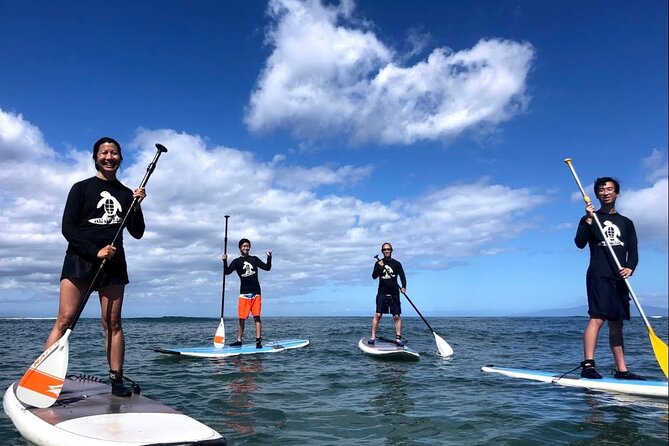Looking to embark on a stand-up paddle boarding adventure? This detailed guide offers valuable tips for stand up paddle boarding beginners to ensure a successful and enjoyable experience on the water.
Stand up paddle boarding, often referred to as SUP, has become a popular water activity that combines balance, strength, and relaxation. Whether you’re looking to explore serene lakes or catch waves in the ocean, paddle boarding offers an exhilarating way to connect with nature and have fun on the water. If you’re new to this sport, don’t worry – this guide is tailored to help beginners make the most out of their paddle boarding journey. Read on for essential tips and insights!
Tips for Stand Up Paddle Boarding Beginners
Getting Started: Choosing the Right Equipment
Selecting the right paddle board is crucial for a successful paddle boarding experience. Beginners should opt for a wider, more stable board, which helps with balance. A board around 10-11 feet in length is ideal for beginners. Additionally, choose a paddle that’s comfortable to hold and the right length for your height.
Dress Comfortably and Use Sun Protection
Wear appropriate clothing that allows for movement and comfort. Don’t forget to apply sunscreen to protect your skin from the sun’s harmful rays, even on cloudy days. Sunglasses with a strap and a hat are also recommended to shield your eyes and face from glare and sunburn.
Paddle Techniques: Finding Your Rhythm
Hold the paddle with a relaxed grip and use your core muscles for stability and power. Start by practicing your paddle strokes close to the shoreline before venturing out. Use long, smooth strokes on each side of the board to maintain balance and control.
Finding Your Balance
Maintaining balance is key in stand-up paddle boarding. Begin on your knees to get a feel for the board’s stability before attempting to stand. Once you’re ready, slowly rise to a standing position, keeping your feet parallel and shoulder-width apart. Engage your core muscles to help with balance.
Start in Calm Waters
For beginners, it’s best to start paddle boarding in calm, flat waters. Lakes and slow-moving rivers are excellent options. This will help you get used to the board’s movement and build confidence before tackling more challenging conditions.
Mastering Turning Techniques
Learning how to turn efficiently is essential. To turn left, paddle on the right side, and to turn right, paddle on the left side. You can also use a sweep stroke by extending the paddle out towards the tail of the board and using it as a pivot point.
Staying Safe: Understanding Water Conditions
Before heading out, check the weather forecast and water conditions. Avoid paddle boarding in strong winds, high waves, or thunderstorms. Always wear a personal flotation device (PFD) for safety, and consider using a leash to prevent the board from drifting away.
Falling Gracefully
It’s completely normal to fall off the board, especially as a beginner. If you feel yourself losing balance, try to fall away from the board to avoid injury. Climb back onto the board from the rear, and remember that falling is part of the learning process.
Explore and Have Fun
Once you’ve gained confidence and mastered basic techniques, start exploring different waterways and locations. Paddle boarding offers a unique perspective to enjoy nature and wildlife, so take your time to soak in the experience.
FAQs (Frequently Asked Questions)
How do I choose the right paddle board size?
Choosing the right paddle board size depends on your weight, skill level, and intended use. Generally, beginners should opt for wider and longer boards for better stability.
Can I paddle board if I can’t swim?
While knowing how to swim is beneficial, wearing a PFD (personal flotation device) is essential, even for non-swimmers. It provides an added layer of safety.
What should I do if I encounter strong winds while paddle boarding?
If you encounter strong winds, paddle closer to the shoreline to avoid getting too far from safety. Kneeling on the board can also help improve stability in windy conditions.
Is stand-up paddle boarding a full-body workout?
Yes, stand-up paddle boarding engages various muscle groups, including the core, legs, and arms. It’s a great low-impact workout that also offers relaxation benefits.
Can I bring my belongings on the paddle board?
Yes, you can bring some belongings on the board, but make sure they’re secured. Consider using a dry bag to keep your essentials safe and dry.
How do I transport the paddle board?
Transporting a paddle board is easier with a roof rack or a specialized paddle board carrier for your vehicle. Make sure the board is properly secured before driving.
Conclusion
Stand up paddle boarding is a fantastic way for beginners to connect with nature, engage in physical activity, and have a great time on the water. By following these tips and guidelines, you’ll be well-equipped to embark on your paddle boarding journey with confidence. Remember, practice makes perfect, so don’t be discouraged if it takes a few tries to find your balance. Now, grab your paddle board, head out to the water, and enjoy the thrilling experience of stand-up paddle boarding!

